Review: Five Lightweight Full Face Helmets
Over the last few years, lightweight full face helmets have gone in the right direction. They still offer better ventilation and a lighter weight than a dedicated downhill full face, but they've actually become a little heavier, which I'd say is for the best. The pursuit of the lowest weight possible was probably taken to the extreme with some of the earlier versions of the style that became more commonplace around 2014 or 15. I was also never a particular fan of the removeable chinguard. For me, if I'm riding something that's enough to warrant a full face, I don't want a chinguard that's attached by a magnet.
Of course, the level of protection we feel is right for us is very personal, and I would encourage any reader to wear as much protection as possible to make themselves comfortable (I'm a big believer in wearing more protection than required rather than less). That said, what has worried me in the past is that people who would wear those very light full face helmets as a precaution for pedal-accessed trails would also wear those same helmets in the bike park. To me, that just doesn't make sense. Monetary considerations to one side, I don't understand the reasoning.
Helmet Standards
All of the helmets profiled here are certified to the ASTM F1952 DH standard. In order to achieve that certification, helmets must withstand a higher impact level than what's necessary to achieve CPSC or EN-1078 certification, due to the fact that downhill riding typically involves higher speeds, and thus, bigger crashes.
For instance, in order to achieve ASTM F1952 certification a helmet can't transmit more than 300 G's to the headform when dropped onto a curbstone-shaped anvil from a height of 1.6 meters. In comparison, that drop is 1.2 meters high for the CPSC standard, and 1.1 meters high for EN-1078. It's worth noting that a chin bar isn't required for a helmet to be DH-certified, but that if a chin bar is present it needs to pass an impact test as well.
The purpose of this review is to evaluate the helmets based on their fit and design, not their impact resistance. There weren't any lab coats or complicated test rigs used for this article; instead, it was multiple rides out in the real world that delivered the necessary data. I would add the caveate though that I believe a downhill helmet will offer more protection than an enduro full-face, and the very fact there is a distinction is self-evident of that. While there will be a drop-off, one of the reasons is that a downhill helmet is often heavier. The lightest on test came in around 300 grams lighter than the heavier ones, and I can't help but take that into consideration when putting it on. For your reference, the Bluegrass and the Lazer helmet have both been tested by Virginia Tech.
Abus Airdrop
The Abus Airdrop is a strange mix of old meets new. In some ways, it's cutting edge and in one or two other instances it feels like the dull-blade of yesterday's ideas.
It's the burliest feeling helmet, with surprisingly good ventilation. The chin bar sits far away from the face, the pads sit further back around the cheeks. This makes a huge difference in ventilation, and for a helmet that feels so substantial it does make for a very cool-running one. For those, like myself, who tend to err on the side of caution when it comes to weight and find the marriage of weight and protection an irresistible prospect the MIPs equipped Abus could be a good option.
The Abus Airdrop is a strange mix of old meets new. In some ways, it's cutting edge and in one or two other instances it feels like the dull-blade of yesterday's ideas.
It's the burliest feeling helmet, with surprisingly good ventilation. The chin bar sits far away from the face, the pads sit further back around the cheeks. This makes a huge difference in ventilation, and for a helmet that feels so substantial it does make for a very cool-running one. For those, like myself, who tend to err on the side of caution when it comes to weight and find the marriage of weight and protection an irresistible prospect the MIPs equipped Abus could be a good option.
Details
• Rotational impact protection: MIPS
• Buckle type: double d-ring buckle
• Additional features: adjustable visor, quick release cheek pads
• 4 color options
• Sizes: S/M & L/XL
• Weight: 933 grams (size L/XL)
• MSRP: $300 USD
• www.abus.com
• Rotational impact protection: MIPS
• Buckle type: double d-ring buckle
• Additional features: adjustable visor, quick release cheek pads
• 4 color options
• Sizes: S/M & L/XL
• Weight: 933 grams (size L/XL)
• MSRP: $300 USD
• www.abus.com
The Airdrop also is ready to have the Abus Quin System installed. The crash detection system, which can notify contacts via a rider's smartphone if a crash is detected, is available to buy aftermarket for around $100,
It's not all good though. The Mips is very noisy Mips. The system, which often can creak and groan as you ride, is particularly noisy on the Airdrop. The ratchet at the back also digs in, especially when taking it on and off. The pads are comfortable though, and the ventilation around the back of the helmet is good, even if not quite as impressive as something like the Leatt. The "Ambient Sound Channels" system contributes to this. That said, it's not like it has a massively noticeable benefit compared to the other helmets on the test. Furthermore, I quite like the hush-quiet feel of a true downhill full-face helmet. Systems such as this mean they kill the wind noise but not the bike noise and trail chatter. I personally prefer the quieter, more muted option.
As for looks, I like the modern take on a conventional full face. That said, there is something about the chin bar being so far away from your face and the large visor that does make it appear somewhat bulbous. There is also a decent gap between the edge of the goggles and the helmet. This does help airflow, but doesn't look so hot.
This helmet is best suited to those who will happily forgo something a little better ventilated for something a bit more reinforced. The chin bar is more solid than some others on the test, for example. This would also make a great all-day enduro helmet for big, lift-accessed pedaling rides in the mountains or multi-stage enduro races. Of all the helmets, it is one of two that I would consider racing in. That said, if you're looking for a trail lid with bonus protection, rather than a full downhill helmet with better ventilation there are simply better options.
Pros
+ Breathes relatively well
+ Reassuringly solid
+ Well ventilated for the weight
Cons
- Noisey
- Ratchet is uncomfortable
Leatt Gravity 4.0
The Leatt Gravity 4.0 is possibly the closest in terms of design, fit, and dimensions to a standard full-face helmet. In fact, although lots of brands do make lightweight helmets, it's not all that often that their sponsored pros actually wear them in between the tape. However, the Leatt is sometimes spotted being raced at the top level of enduro.
The Leatt does offer reasonable ventilation compared to a downhill helmet, but it was also the hottest on test, at least at lower speeds. When moving quicker, the air runs through well, and the ventilation past the ears towards the rear of the helmet is its strong point.
The Leatt Gravity 4.0 is possibly the closest in terms of design, fit, and dimensions to a standard full-face helmet. In fact, although lots of brands do make lightweight helmets, it's not all that often that their sponsored pros actually wear them in between the tape. However, the Leatt is sometimes spotted being raced at the top level of enduro.
The Leatt does offer reasonable ventilation compared to a downhill helmet, but it was also the hottest on test, at least at lower speeds. When moving quicker, the air runs through well, and the ventilation past the ears towards the rear of the helmet is its strong point.
Details
• Rotational impact protection: 360° Turbine Technology
• Buckle type: Fidlock magnetic closure
• Additional features: removable mouth vent, quick release cheek pads
• 5 color options
• Sizes: S, M, L, XL
• Weight: 941 grams (size XL)
• MSRP: $270 USD
• www.leatt.com
• Rotational impact protection: 360° Turbine Technology
• Buckle type: Fidlock magnetic closure
• Additional features: removable mouth vent, quick release cheek pads
• 5 color options
• Sizes: S, M, L, XL
• Weight: 941 grams (size XL)
• MSRP: $270 USD
• www.leatt.com
It's got other strengths too. Most notably, by using their own 360 Turbine impact absorption system, the Gravity 4.0 can go without Mips, meaning it's very quiet. It also has a removable mouthpiece for more ventilation (which is what I preferred), and is one of two helmets on test alongside the Lazer that has no retention buckle at the back of the helmet. This makes it more comfortable to take on and off over the course of a day in the bike park. The pads are also very soft. All in all, it feels like a well finished helmet.
The chin bar feels sits closer to your face than the other helmets, and the cheek pads also sit quite far forward. This means that pedaling at slower speeds can get very warm. While this is a good helmet for gravity riding, I wouldn't recommend it for pedaling. This would be good for multi-stage racing if you could put up with the heat, but even in cooler climates the helmet does feel close and stuffy.
Similar to the Abus, this helmet really mutes all wind noise, which may be to your liking. It also benefits from the ease of a magnetic Fidlock clip and a large breakaway visor. That said, the visor isn't adjustable, even though I never found it to be an intrusion into my vision. All in all, it is a good helmet, and I would only really fault it for its ventilation and heat management, particularly at lower speeds.
Pros
+ Quiet and comfortable padding
+ Removable mouthpiece
+ Secure fit without ratchet
Cons
- Warm and stuffier at slower speeds
IXS Trigger FF
The IXS Trigger FF is a full face for those that might otherwise be wearing an open face helmet, and I think it does an admirable job of offering a good compromise of comfort, breathability and coverage.
Most brands do offer a true downhill full face, so why not offset that by offering something really different? I feel that's what IXS has done here. It's similar to the Lazer in its high level of breathability. However, I would say it's a better execution in terms of fit.
The Trigger isn't a replacement for a downhill helmet, and I don't believe it's meant to be. Instead, it's just an extra layer of protection for trail riding. Of all the helmets here, this would be the one I'd most likely wear on a daily basis for pedaling.
The IXS Trigger FF is a full face for those that might otherwise be wearing an open face helmet, and I think it does an admirable job of offering a good compromise of comfort, breathability and coverage.
Most brands do offer a true downhill full face, so why not offset that by offering something really different? I feel that's what IXS has done here. It's similar to the Lazer in its high level of breathability. However, I would say it's a better execution in terms of fit.
The Trigger isn't a replacement for a downhill helmet, and I don't believe it's meant to be. Instead, it's just an extra layer of protection for trail riding. Of all the helmets here, this would be the one I'd most likely wear on a daily basis for pedaling.
Details
• Rotational impact protection: Mips
• Buckle type: magnetic
• Additional features: adjustable visor
• 9 color options
• Sizes: XS, SM, ML
• Weight: 664 grams (large)
• MSRP: $299 USD
• www.ixs.com
• Rotational impact protection: Mips
• Buckle type: magnetic
• Additional features: adjustable visor
• 9 color options
• Sizes: XS, SM, ML
• Weight: 664 grams (large)
• MSRP: $299 USD
• www.ixs.com
The main strength of the IXS is definitely its ventilation, and there seems to have been a deliberate effort to just reduce the size of the pads, especially around the face. This really comes back to the rider in terms of comfort and heat management.
Pros
+ Light
+ Adjustable visor
+ Very breathable
Cons
- Doesn't feel as substantial compared to others
Bluegrass Vanguard Core
Bluegrass is the gravity wing of Met helmets that was founded fifteen years ago. Although it can get slightly confusing having two brands that make the same thing, all you need to know is that Bluegrass just does gravity protection, including body armor and pads.
The Vanguard is probably the most well-rounded helmet on test when it comes to striking a balance between breathability, comfort and robustness. I haven't tested these helmets by crashing, so my observations are just that - observations - but I think this strikes a good balance. Like the Leatt it includes a removable mouthpiece. Stylistically, it holds similar lines to Bluegrass' Legit downhill helmet.
Bluegrass is the gravity wing of Met helmets that was founded fifteen years ago. Although it can get slightly confusing having two brands that make the same thing, all you need to know is that Bluegrass just does gravity protection, including body armor and pads.
The Vanguard is probably the most well-rounded helmet on test when it comes to striking a balance between breathability, comfort and robustness. I haven't tested these helmets by crashing, so my observations are just that - observations - but I think this strikes a good balance. Like the Leatt it includes a removable mouthpiece. Stylistically, it holds similar lines to Bluegrass' Legit downhill helmet.
Details
• Rotational impact protection: MIPS
• Buckle type: Fidlock magnetic
• Additional features: c-shaped cheek pads, removable mouth piece
• 4 color choices
• Sizes: S, M, L
• Weight: 776 grams (large)
• MSRP: $350 USD
• www.met-helmets.com
• Rotational impact protection: MIPS
• Buckle type: Fidlock magnetic
• Additional features: c-shaped cheek pads, removable mouth piece
• 4 color choices
• Sizes: S, M, L
• Weight: 776 grams (large)
• MSRP: $350 USD
• www.met-helmets.com
The helmet has a Fidlock buckle and a flexible even if non-adjustable visor. There is a ratchet at the back of the helmet. Again, when it comes to comfort when removing the helmet I prefer Leatt and Lazer's style, which provides a secure fit through padding. However, it probably isn't a coincidence that the helmets with a ratchet system can forgo more padding in the first place and therefore be better ventilated. The padding in the Vanguard itself is very minimalist and the design makes use of novel c-shaped cheek pads to maximise venting.
Bluegrass has done a great job of integrating goggles in one regard, and a sub-par execution in another. When putting goggles on the back of the helmet for climbing, there are divots and contours to hold them securely, which I really like. However, when wearing the goggles normally there is a huge gap between the side of the goggles and the helmet. It's not a big deal, but it is a noticeable blemish on what else is quite a good-looking helmet in my opinion.
The Vanguard is only behind the Trigger when it comes to breathability, but it also does feel stronger and considerable in your hands. The ventilation is good if not fantastic, but it also manages to incorporate that airflow with a good deal of comfort and compromise.
Pros
+ Good venting around face
+ Comfortable and without ratchet
+ Removable mouthpiece & flexible visor
Cons
- Large gap between goggle and helmet looks strange
Lazer Cage Kineticore
The Lazer Cage Kineticore brings their impressive crumple zone technology to a full-face helmet. While thankfully I haven't impact-tested this technology, I have enjoyed the way that the system manages to pull air through a Lazer open-face helmet in the past, and I've been similarly impressed with the Cage. While it's not the best at slower speeds or without foibles in terms of fit, it is impressive when it comes to airflow when on trail and descending.
The Lazer Cage Kineticore brings their impressive crumple zone technology to a full-face helmet. While thankfully I haven't impact-tested this technology, I have enjoyed the way that the system manages to pull air through a Lazer open-face helmet in the past, and I've been similarly impressed with the Cage. While it's not the best at slower speeds or without foibles in terms of fit, it is impressive when it comes to airflow when on trail and descending.
Details
• Rotational impact protection: Kineticore
• Buckle type: magnetic
• Additional features: novel ventilation
• 3 color options
• Sizes: S, M, L, XL
• Weight: 898 grams
• MSRP: $300 USD
• www.lazersport.us
• Rotational impact protection: Kineticore
• Buckle type: magnetic
• Additional features: novel ventilation
• 3 color options
• Sizes: S, M, L, XL
• Weight: 898 grams
• MSRP: $300 USD
• www.lazersport.us
Ventilation on this helmet is good but it mainly shines when the speed is higher. On slow speeds it's okay but to my mind not as good as the Bluegrass or the IXS. The visor is particularly flexible even if not adjustable. Save for the fit, it's a good all-around helmet.
Pros
+ Good ventilation when descending
+ Does without ratchet
Cons
- Visor isn't adjustable
- Uncomfortable around the ear
Top Picks
All of the helmets featured here are worthy options if you're in the market for a lightweight full-face, but choosing the best one will depend on what type of riding you're planning on using it for.
Racing
For racing true-enduro, where the stages are gnarly and you're a mixture of both scared and excited, I would lean towards the Abus or Leatt. Although I have no intention of proving it, they do just feel so much more reassuring in your hands. Without the creaking and fit issues of the Abus it would be a clear leader, but for long days riding the sheer comfort of the Leatt offsets its slightly hotter running, and I would tie them for first. The Bluegrass isn't too far behind. I personally wouldn't be that excited about racing in either the IXS or the Lazer, whatever the certifications say.
All-Purpose
For all-purpose riding when it's about increasing the protection compared to a standard open face for your everyday trail rides, as opposed to replacing a downhill helmet, the IXS Trigger is a really great option. It's the best breathing helmet. Again, the Bluegrass Vanguard is not far behind. For that reason, I would say the Bluegrass is possibly the best all-rounder, even if not the out-and-out best for pedaling or hotter days.
Author Info:
Must Read This Week
Sign Up for the Pinkbike Newsletter - All the Biggest, Most Interesting Stories in your Inbox
PB Newsletter Signup
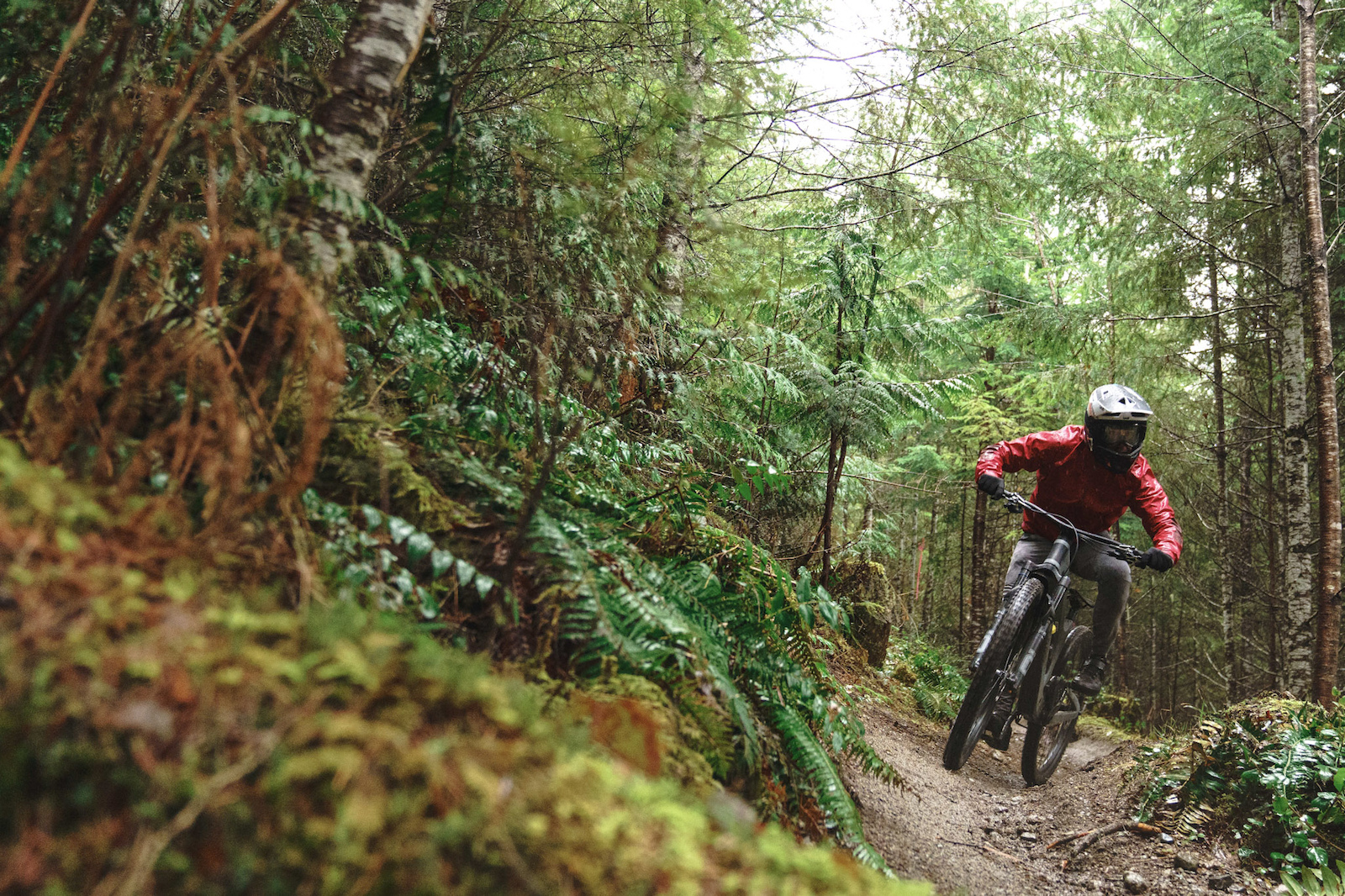
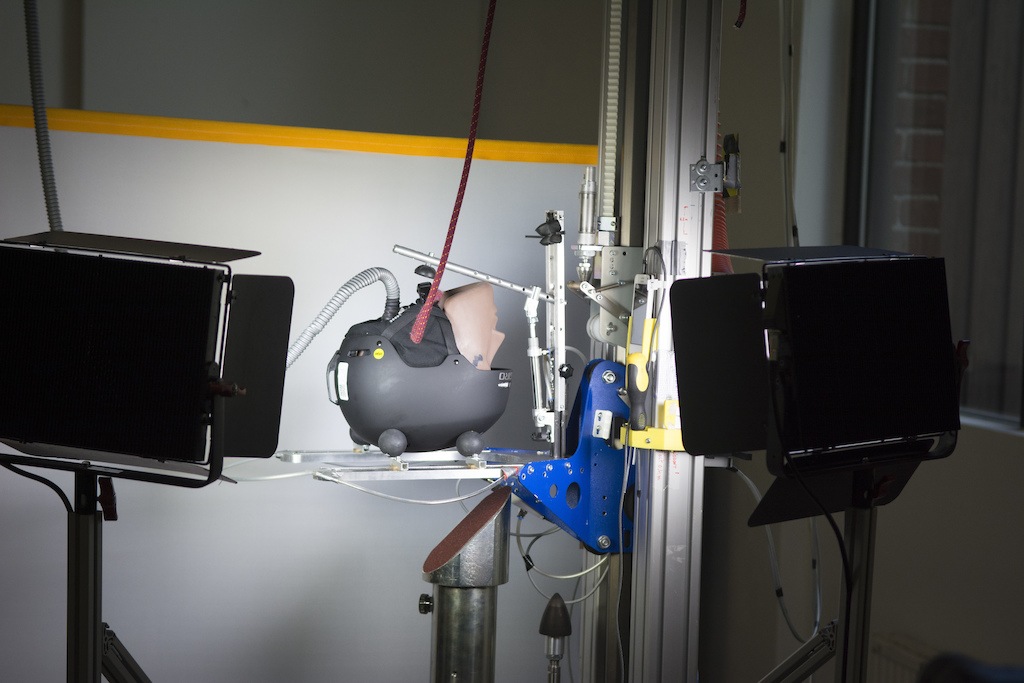
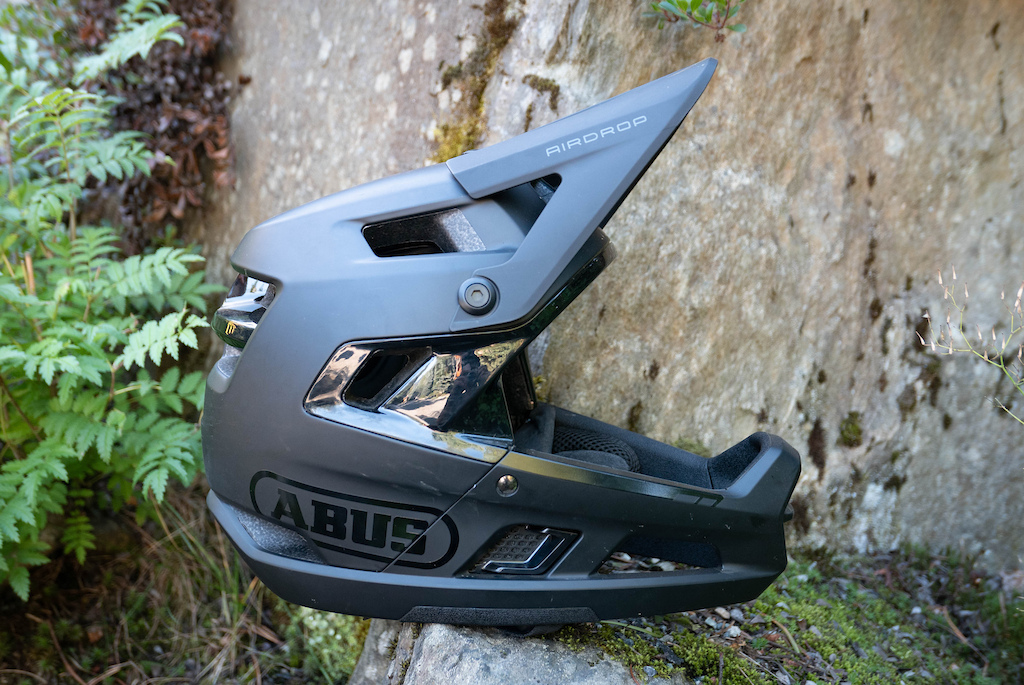
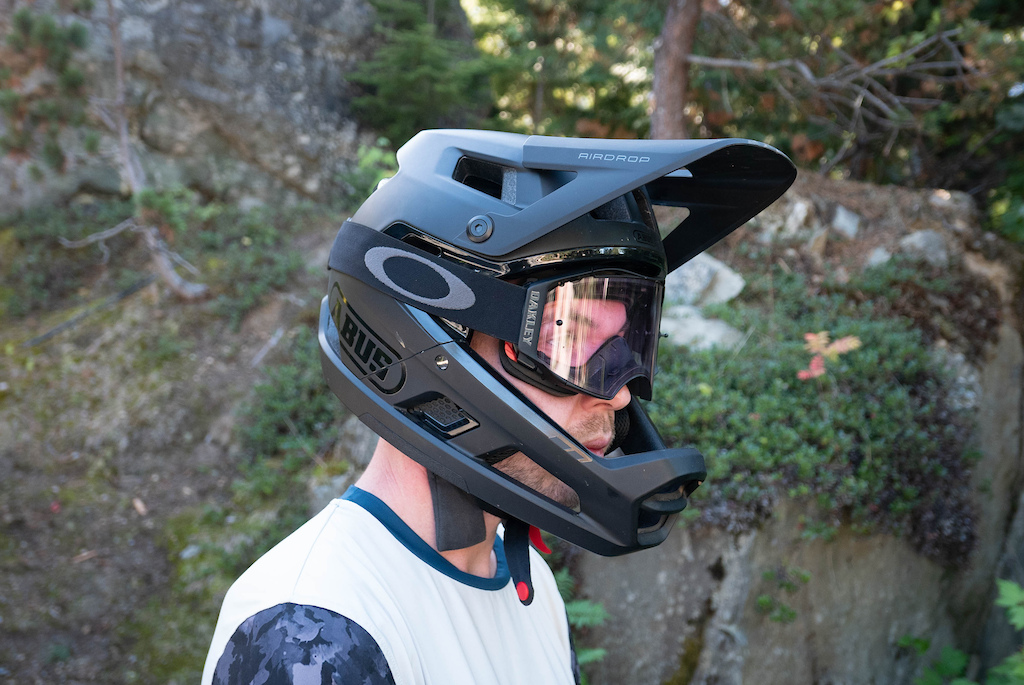
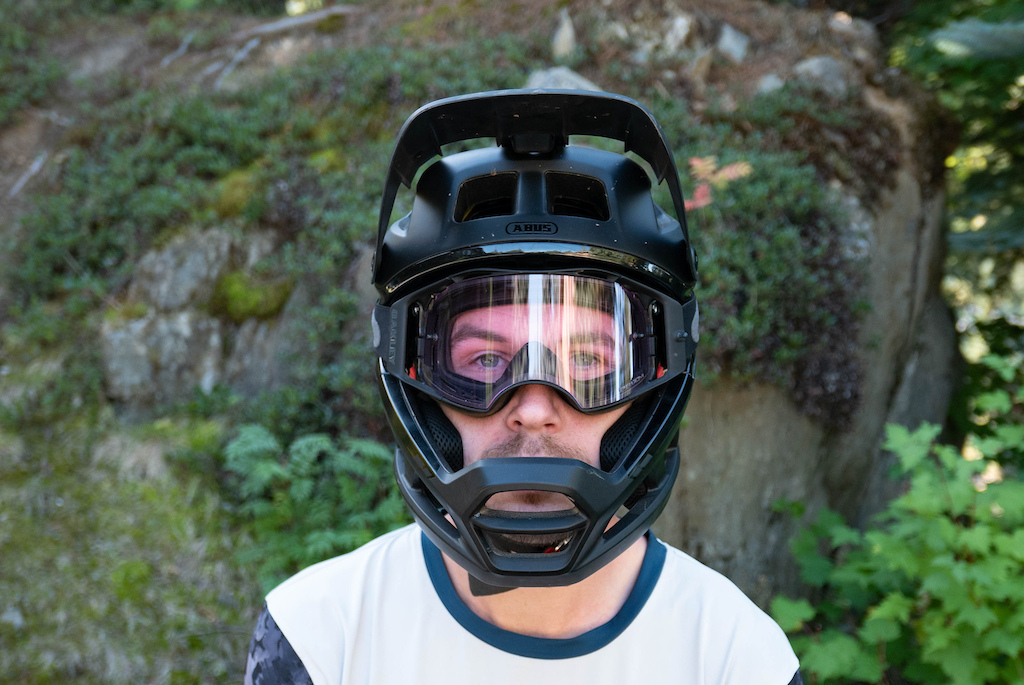
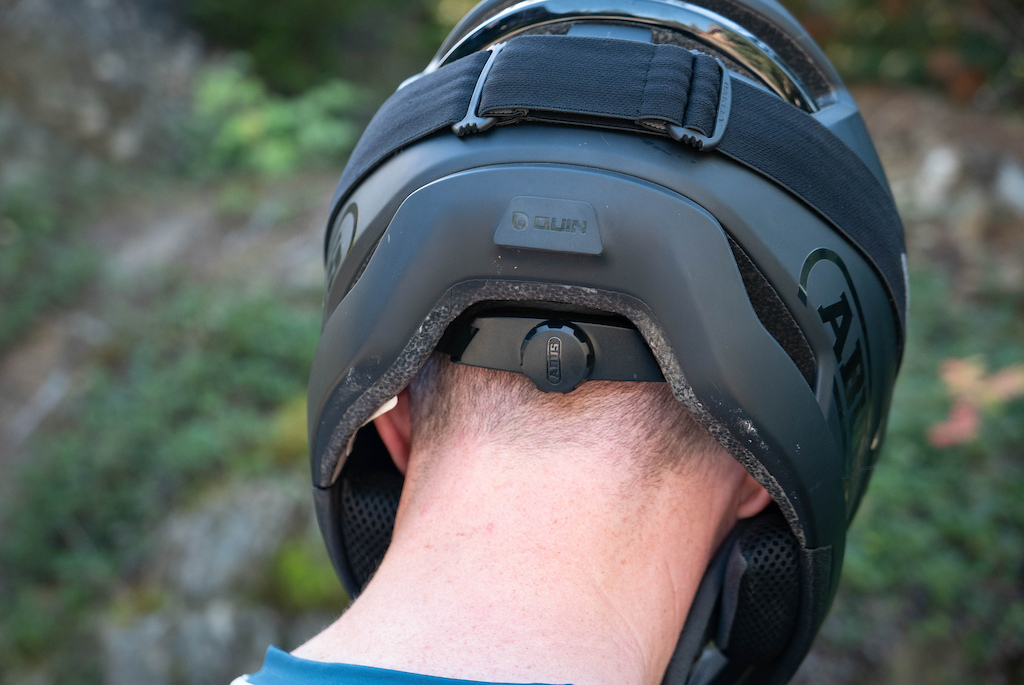
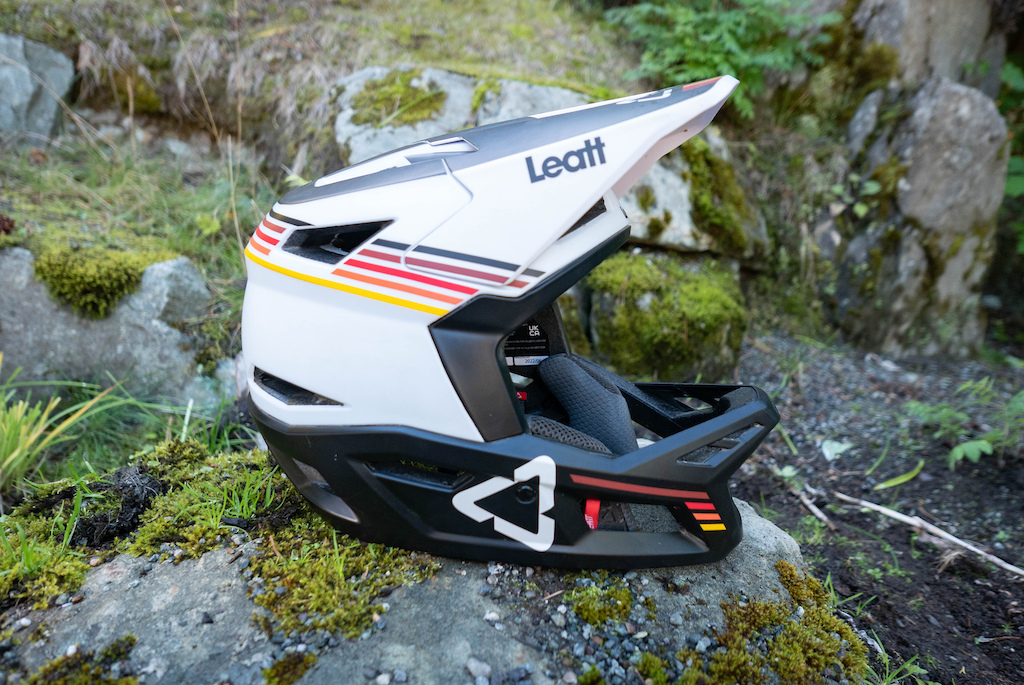
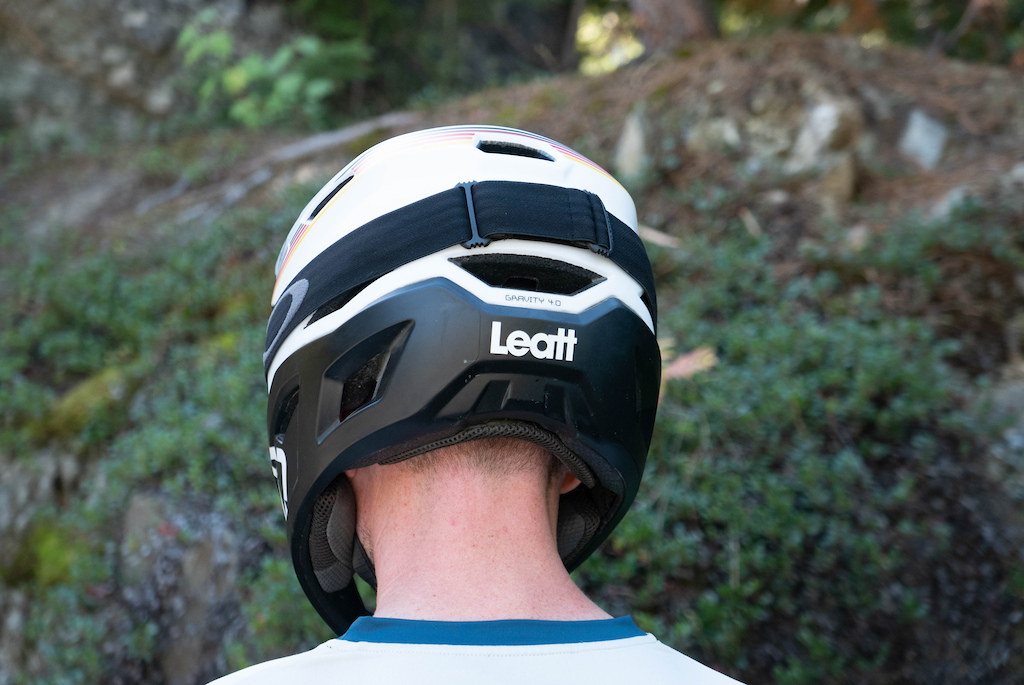

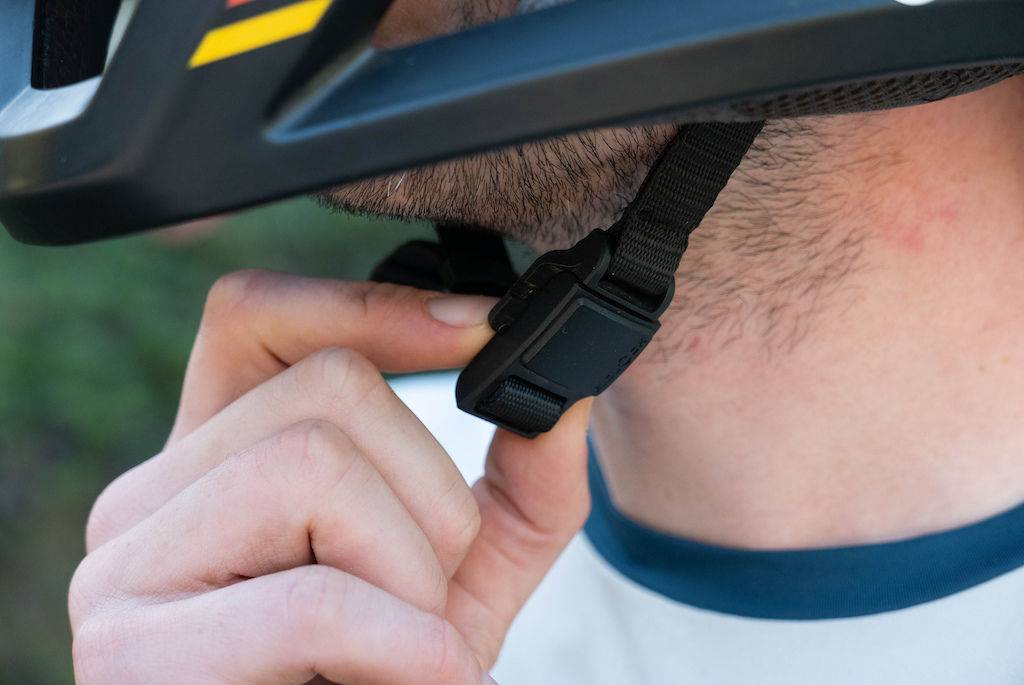

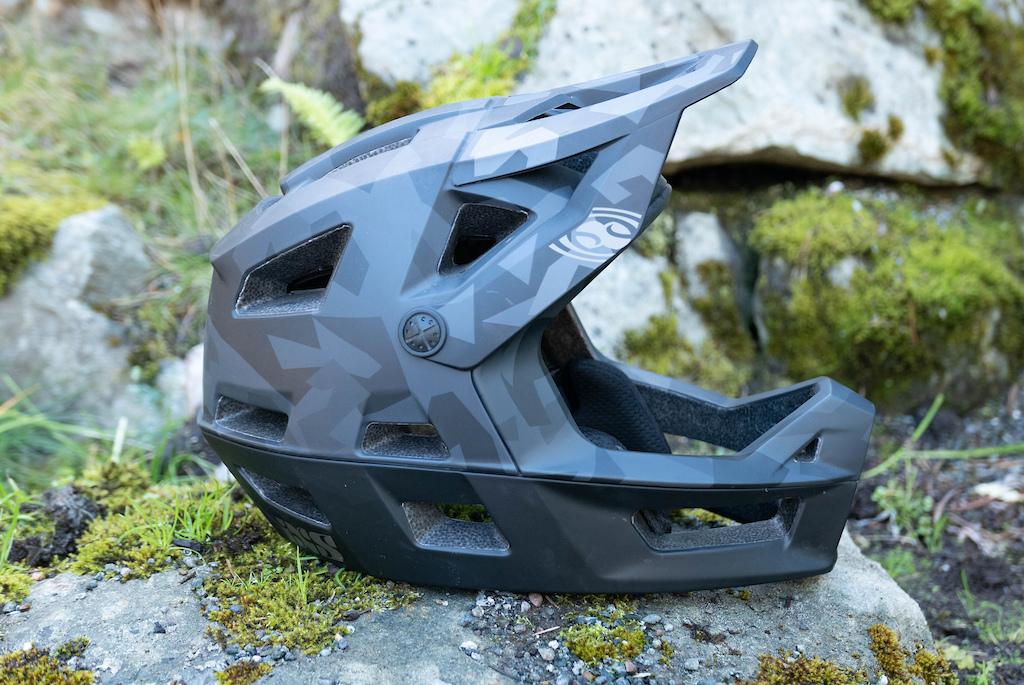

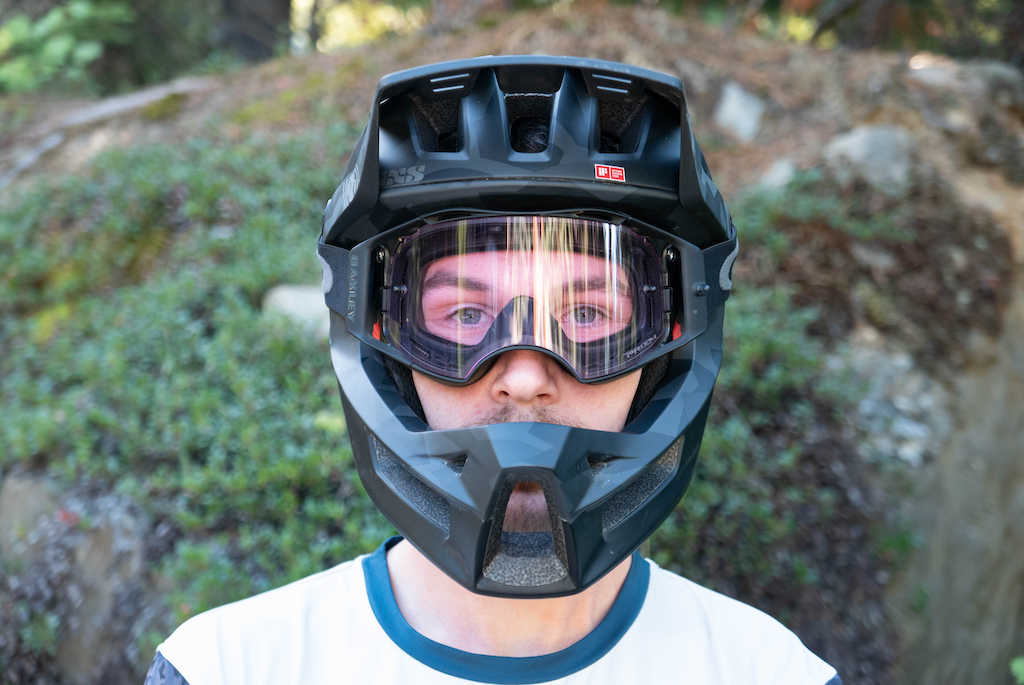
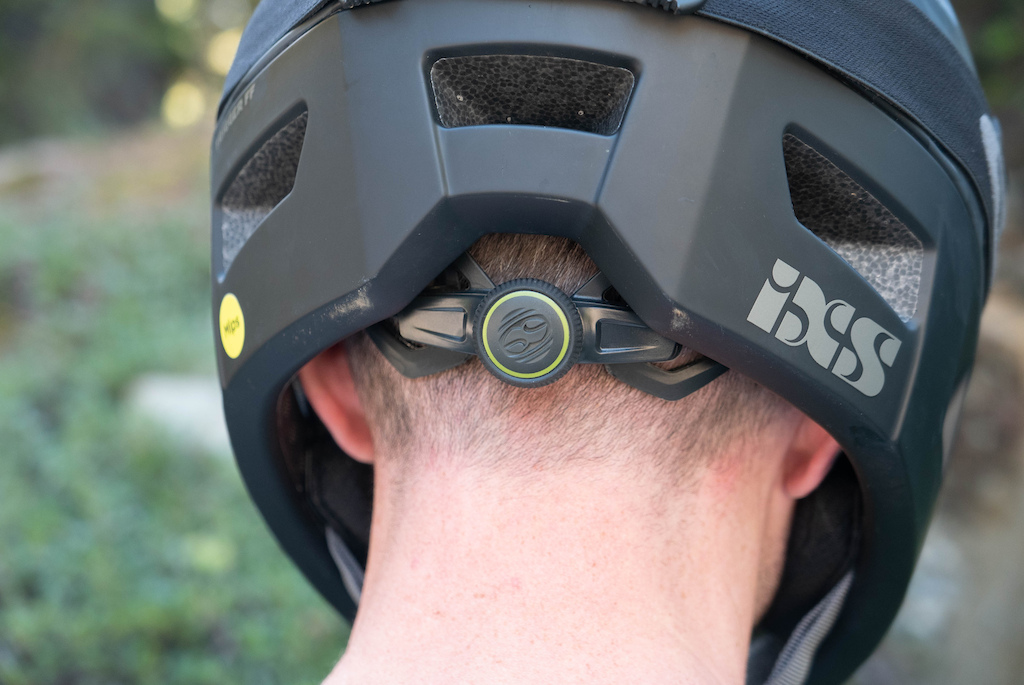
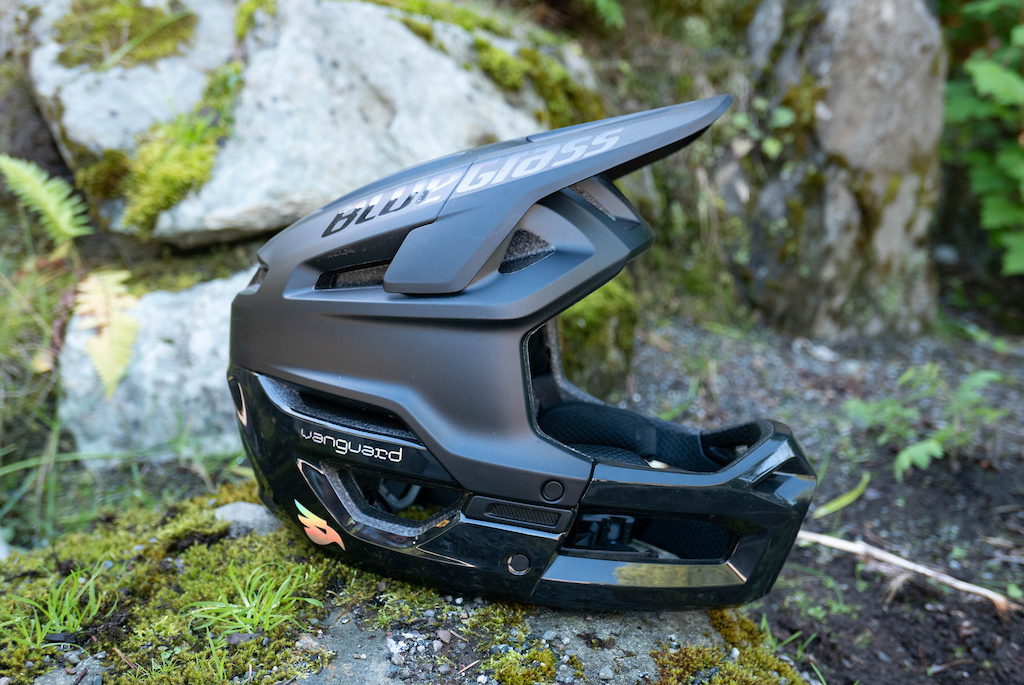



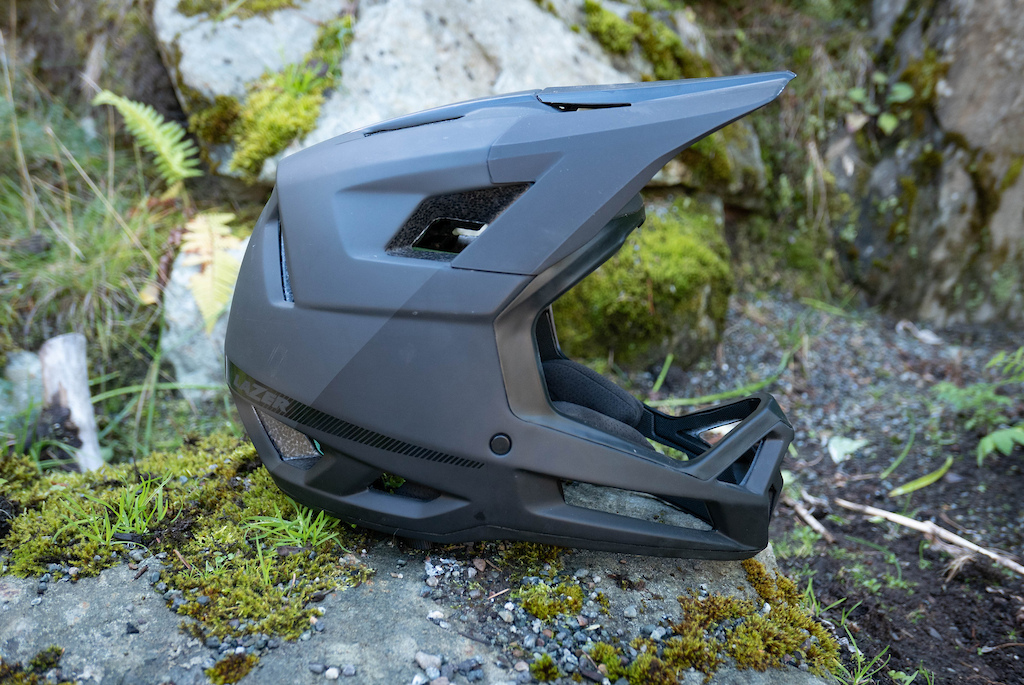
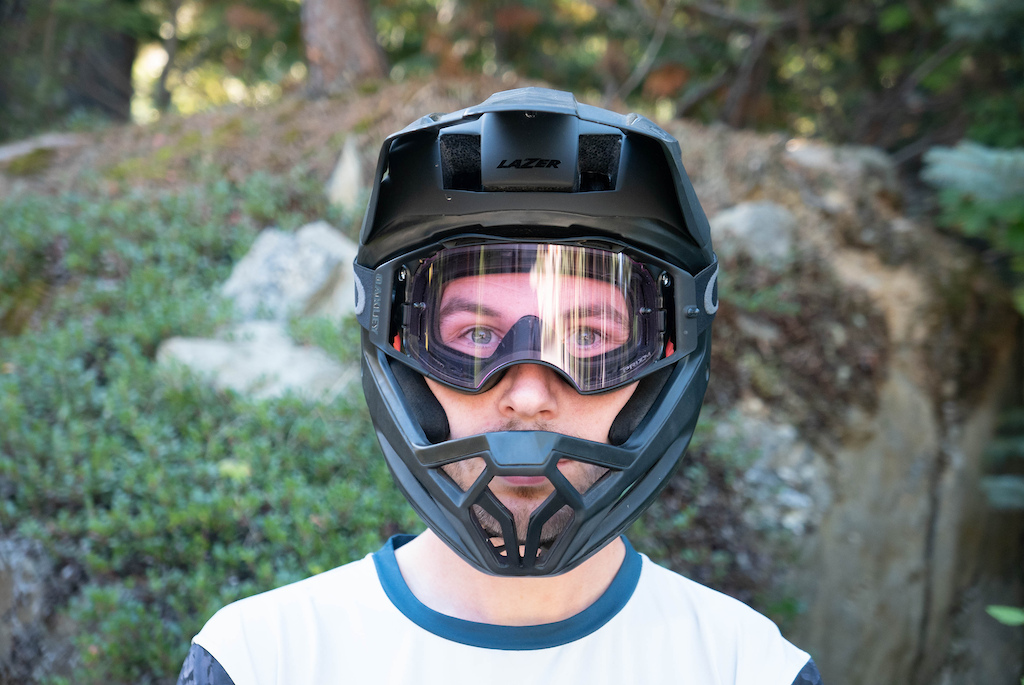


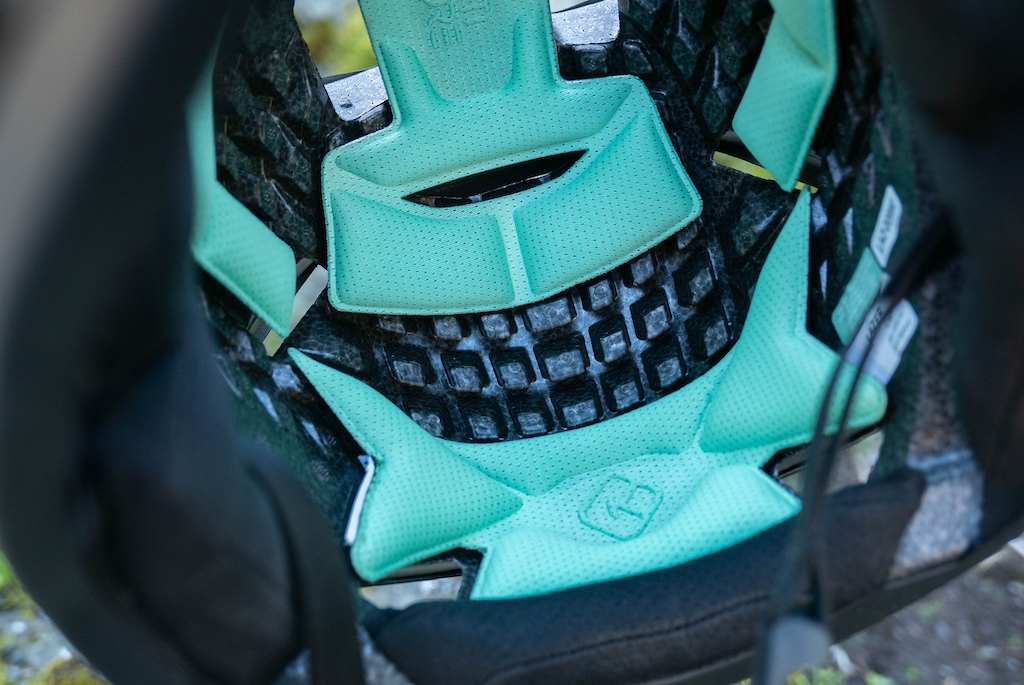

Finding shops with different brands and then finding out what is in stock is a bit of a chore but a necessary process at this point.
I fit the Troy Lee A3 perfectly and when I went to try on their "XL" full face it didn't even make it to my ears.
Don't get me wrong, I want the safest helmet. I just want to have some way of knowing this objectively. I don't want to hear about what something "thinks" will be safer. One can dream I guess.
ASTM F1952, by their own admission in the whitepaper, can result in less effective protection at lower speeds. In order to absorb the energy from a higher anvil drop, the density of the EPS must be increased. In the real world this of course translates to better protection against high-speed impacts, however, because the density is increased, slower-speed impacts are absorbed less effectively and can actually increase the risk of concussion.
The only way in which an F1952 certified helmet will provide better protection for downhill riding is if it utilises a dual-density EPS liner. One with a high density for high-speed crashes and one with a lower density for slower-speeds. Obviously the addition of any impact tech (Turbine etc) will help for lower speed too.
So if you see a helmet that is F1952 certified with a single density EPS, chances are it will actually provide less protection at lower speeds. Helmets you tend to find like this are on the more budget end, where naturally riders will likely be going slower.
Since then there have been some changes, but I wouldn't bet against the 'cheap' helmets being just as effective in the real world.
It's the features/style/image that drives us all to get the expensive ones I truly believe.
smarter-usa.org/wp-content/uploads/2017/06/10_2005_June_Motorcycle_H.pdf
Now that was a few long years ago, but it very clearly discusses the issues around helmets and certifications. Some things have changed, but certainly worth a look.
Of personal experience my daughter got a rather significant concussion while wearing a top of the line Giro ski helmet when hit by a' out of control skier and her helmet showed basically no deformation. Not saying it was the fault of the design, but it would have been less of a concussion if it had been 'softer'. Again, only personal experience, not the absolute story for all accidents.
Also, why is the Smith Mainline not in the mix?
I'm in the market to replace my Proframe and would like to know how some of these options compare?
Also, if a helmet is rated for a harder impact it may not protect you as well in a small crash as a regular helmet due to not enough energy in a small crash to compress the stiffer foam of the dh rated helmet.
Lastly I would like to point out how little impact protection these are.
They protect you from 1.8 meters fall. That is your head height when standing on your pedals. Add a jump height to that and brain splat.
www.pinkbike.com/news/leatt-introduces-helmet-replacement-program.html
because it was an expensive, top of the line helmet.
www.sueddeutsche.de/wirtschaft/abus-unternehmer-religion-1.4493053?reduced=true
7iDP Project 23 Carbon
I have one and I love it.
Mine is a large, and it weighs exactly 1000 grams, which is pretty good considering.
It is one of the best looking helmets ever made IMO.
I wear mine pedaling and at the mountain, I never feel like my head is over heating, and I can breath well in it too.
I wouldn't trade this helmet for anything and would 100% recommend this helmet to anyone.
7idp.com/products/project-23-carbon
sizing is pretty much spot on according to their website.
I usually wear a XL but according to their site a Large was correct for my head. I called them to ask about sizing and they said the website sizing is very accurate, I went with the Large and it fit like a glove.
The visor itself is not flimsy at all, however the little tab that protrudes out to click and engage on the various setting is a little weak. Mine broke on a fall (the tab NOT the visor) I just used some velcro on the underside back of visor, and stuck it to the helmet. I never adjust it anyways and its better than new this way.
here is my visor and you can see how I used the velcro.
It really is better this way IMO
hope this helps, and for the record, I broke my visor on just about every helmet I ever owned at one time or another.
www.pinkbike.com/photo/25618610
I see you have a 100% Trajecta by reading the comments.I also have a Trajecta and for what its worth the 7iDP Project 23 Carbon is in a league of it's own, compared to the Trajecta in terms of quality, protection, just a better helmet by far. It only weighs like 50 grams more than the trajecta but feels like i'm wearing my TLD D3 carbon as far as protection.
I'd NEVER wear the Trajecta for an all day at the mountain, but I would wear the 7iDP.
It feels like a real DH but its lighter and vented a lot better. I also love the fidlock after using it a couple times. I used to swear by D rings..
I also think its an awesom helmet!
You shouldn't have to glue on a mount almost 2 decades into the action cam era, that's stupid. And night riding has been around as long as riding itself, pretty much. Now that most lights on the market have GoPro-fingers mounting options, usually along with their own handlebar mounts, helmets need to get with the times and offer custom fit breakaway mounts with GoPro or round-bar-style fitments.
Especially ones that tout fancy rotational force dispersion systems and/breakaway visors. A light or camera sticking up off a glued or strapped on mount pretty much nullifies a lot of that fancy shit by giving the ground a big lever with which to yank your head around. Not even to mention how wobbly most straps are despite not being breakaway.
I just don’t think that little sticky mount is a big hassle, they’re basically free and they’re permanently on my helmets now
Fidlock buckles seem like a sale gimmick, but are they ever nice. I don't hesitate pulling it off on a chairlift or even to take a quick breather.
4 days ago, I clipped a tree and went OTB and cracked my head on the dirt. It was my worst crash I have ever had (just got home from hand surgery, from my hand the smashed the tree and broke). This morning I was looking at my TLD Stages helmet, and I convinced it saved my life.. I didn't know it at the time, but there are huge dents in it, and the foam inside is cracked straight through the entire frame. yikes. probably getting a stages again, loved it, but fun to see other options.
The only “heavier” option is the 8.0 which is essentially a moto helmet
But now all of our "enduro line" of helmets (from 2.0 to 4.0, the lower the number, the lower the price point) are convertible helmets. So we shifted the "first 4.0", up to gravity, but still below the gravity 8.0 helmet, our full on DH dedicated, maximum protection helmet.
Spoiler: we will have some news for you end of the year for a model in between.
Ahh that makes sense! Thanks for the clarification!
I’m not sure How much science this claim was based on?
But I truly love my vanguard (a bad neck accident a couple years back prohibits me from wearing heavy helmet for longer that 2 or 3 DH/Enduro runs in a row, so the vanguard and its Virginia tec 5 star rating convinced me. No proper crash yet. Hopefully, there won’t be any bad surprises)
The more weight, the more momentum in a crash, the higher the head speed of the rider and the greater potential for a high energy impact. I don't have any data to back it up, but I think that a lighter helmet can give you more head control (from your neck) and remains within your physical parameters for longer, before you effectively lose control of where your head is going.
You can see an exaggerated version of this with balance bike racing, like at The Malverns Bike Festival this summer. Quite a few 2-4 year old kids have full faces on as their parents want to keep them safe; understandably. When they crash, their little heads whip forwards with the weight of the helmet and they hit the floor every single time when they probably wouldn't in a 250 gram open face kids helmet.
Just my thoughts, anyway.
@henryquinney ?
Any suggestions which helmets are true XL?
My local trails are generally way more dangerous than any nearby bike park LOL
The visor is very weak, the top bracket broke within a few months of purchase but the helmet itself is very impact resistant.
Year ago i had a crash with IXS FF at a medium speed going otb from a jump,hit my head chin first also dislocating my left shoulder. The helmet took the hit just fine, only a minor bend on the chin part. I ended up replacing the damaged helmet with a new IXS FF trigger.
I also had a similar crash 3 years ago with a heavier O'neill helmet. Going otb from a small jump at medium speed, hit my chin again. That time the helmet deformed from the chin part, the metal ventilation net hit my mouth which resulted in nasty cuts on my lips that were very painfull. I couldn't trust such helmet again due to the deformation on impact...
So atleast for me, the heavier helmet was not protecting me any better. Of course each crash is different, and this is just my experience. Have to say though that the o'neill helmet was cheaper, around 120€,
I guess my head shape must be very strange dunno. Out of the 8 there was 2 from this list. Vanguard Core and Leatt 4.0. Bluegrass sizing is M 56-58cm, L 58-61cm. Leatt sizing M 55-59, L 59-63cm. So with my 59cm circumference head I should be bang on L with Bluegrass and inbetween sizes with Leatt. But with all helmet I've tried in the last 4 years M is so small i can hardly put it on, and size L (even with changing pads) is so big that I can lift and twist the helmet way too much.
My TLD Stage from 2018 fits well. So I thought I just buy the same again. Nope. Doesn't fit. They must have changed something.
So I'm stuck with wearing my trusted Giro Montaro Mips halfshell even for gnarliest of bikepark days
I suppose removeable chin guards are like using seat belts without air bags; it's not a good, but it's better than no safety at all.
I just bought a Bell Super DH on sale for $225.
Where it gets dumb again is the Trigger comes back out right about this time of year before we get to "winter". When it actually gets colder, I just end up riding in a regular DH helmet anyway because it's warmer.
@sanchofula D-ring straps and seat belt buckles will quite literally separate your body parts before mechanical failure. The plastic and magnetic latches used on convertible mountain bike helmets are completely laughable. If you're riding terrain or at speeds that's risky enough for you to merit a full face, might as well use the real thing.
I love it, riding mostly in this configuration, TBH.
Please proof me wrong and name me one half-shell-only helmet (no detachable chinbar), that has astm certification.
thank you.
If it has a chin piece it will be tested, but not required.
That's really interesting because I just looked at a few downhill helmets and they all run a Fidlock or similar closure.
Gawd, you guys are just not all that smart these days.
Not all heavy helmets are safer, not all light ones are less.
It is all about extensive lab testing, on as many impact scenarios as possible, these based on reall life / crash learnings.
Helmets with the same impact reduction at a lighter weight are objectively safer
Ekoi Enduro
Both light, breathe well, and look good.